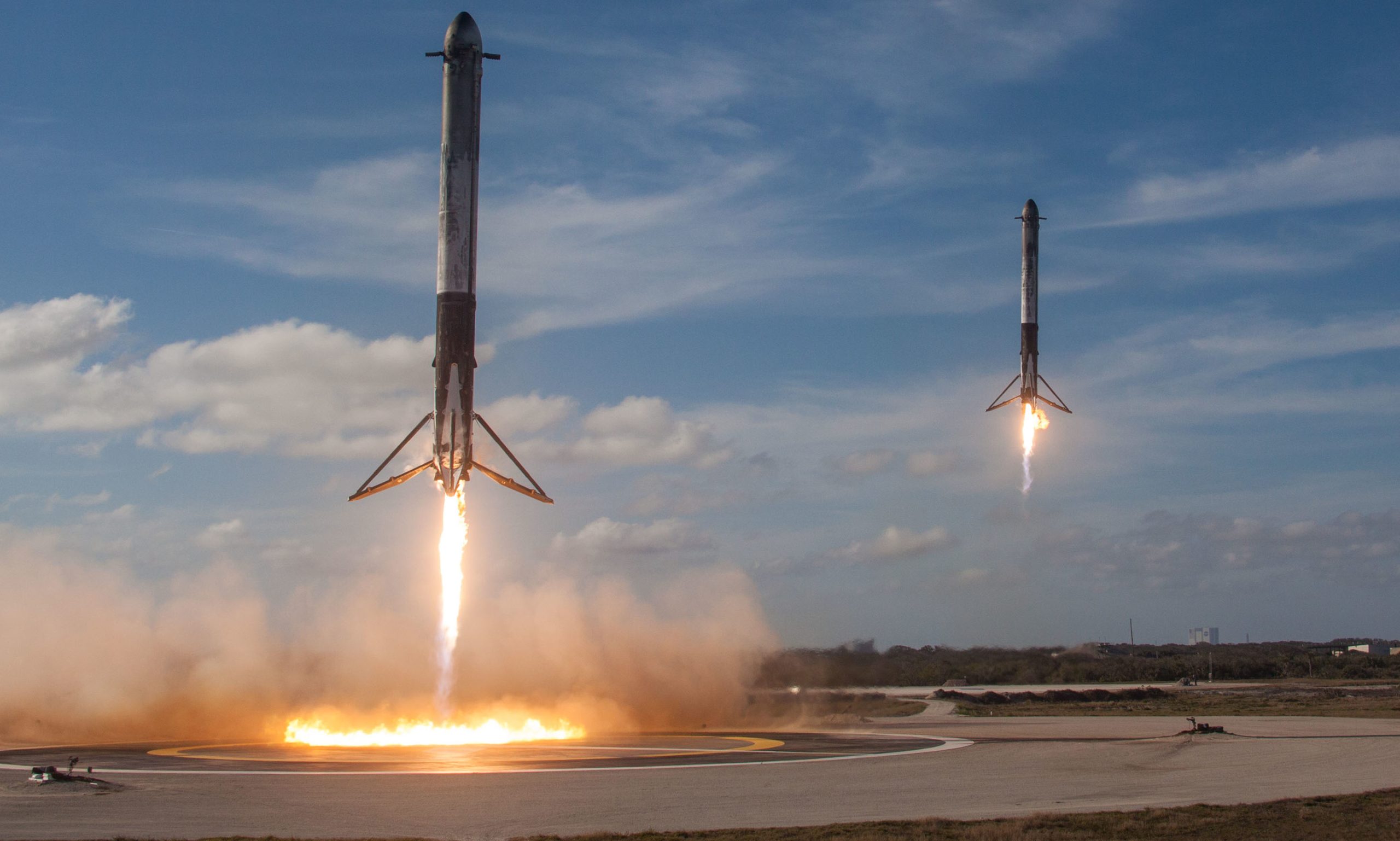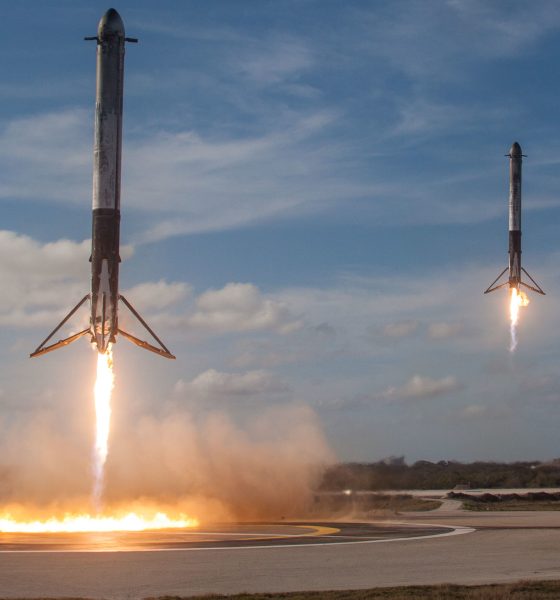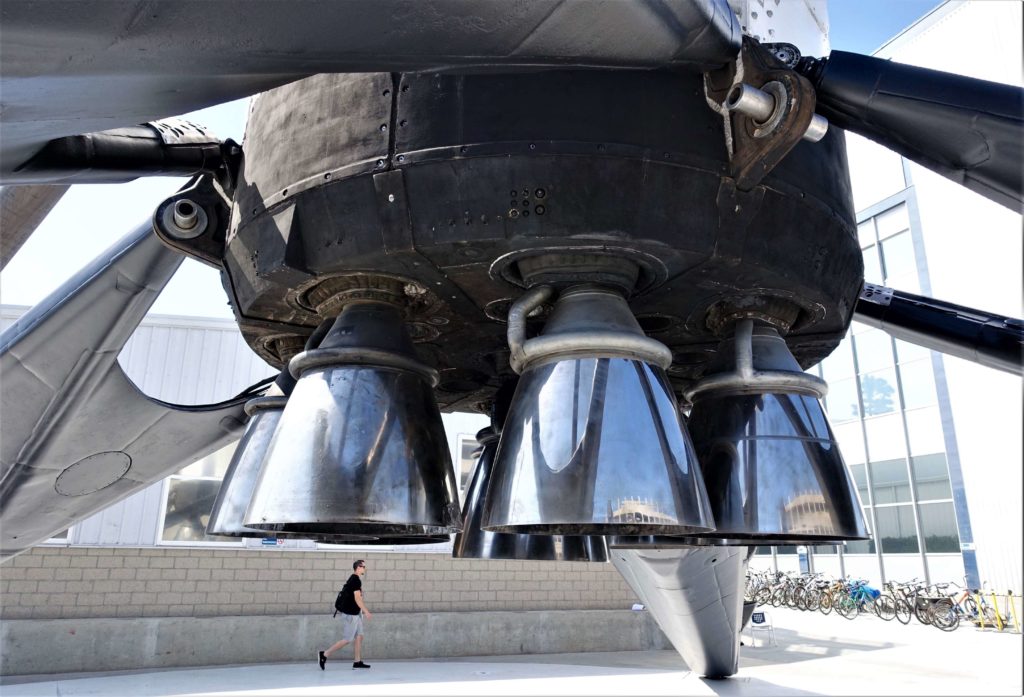

News
Florida wants to build SpaceX and Blue Origin three extra rocket landing pads
First reported by Florida Today, economic development agency Space Florida has expressed serious interest in funding the construction of two major space infrastructure projects in Cape Canaveral, a runway for a prospective Boeing spaceplane and a separate landing zone with up to three pads open for vertical rocket landings from companies like SpaceX, Blue Origin, and others.
KSC reviewing state proposals for new Launch Complex 48, Landing Zone 2: https://t.co/qjoWa0rNoa
— James Dean (@flatoday_jdean) August 6, 2018
SpaceX already operates its duo of rocket landing pads (Landing Zones) designated LZ-1 and LZ-2. Located on Cape Canaveral Air Force Station property, those pads have already supported 11 successful Falcon 9 and Falcon Heavy rocket landings, beginning with the company’s first-ever Falcon 9 booster recovery (December 2015) and ending more recently with the jaw-dropping mirrored landings of both Falcon Heavy side boosters after the rocket’s inaugural launch.
The exact operational capacity of those SpaceX-built landing zones is not entirely clear, meaning that it’s difficult to know if or when SpaceX would need access to two or even three additional pads. Built out of high-temperature concrete and serviced by a handful of automated fire control water jets, the only visible wear and tear the pads seem to suffer through is the routine destruction of their radar-reflective paint, intended to help Falcons more easily determine the vertical distance to their landing targets and thus accurately throttle and gimbal the one or three Merlin engines used to land.
- The first successfully recovered Falcon 9 rocket booster now sits proudly in front of SpaceX’s Hawthorne, CA factory and headquarters. (Steve Jurvetson)
- Falcon Heavy’s side boosters seconds away from near-simultaneous landings at Landing Zones 1 and 2. (SpaceX)
- Elon Musk walks among his recovered Falcon Heavy boosters at LZ-1 and 2. (Elon Musk)
It’s entirely possible that that radar-reflective coating is landing-critical, but the fact that just one of SpaceX’s two LZs was painted with it for Falcon Heavy’s dual rocket landings indicates that it’s at most a useful crutch. As such, the only thing lost by repeated and high-frequency landings at LZ-1 and LZ-2 would be a coat of aesthetically pleasing but nonfunctional paint. Over time, it’s likely that maintenance and refurbishment would be necessary, but the pads currently do not require any critical refurbishment to the landing areas themselves between Falcon landings.
As such, the only conceivable instance where SpaceX would obviously need three or even four rocket landing pads would be multiple lightweight Falcon Heavy launches just days apart or a Falcon Heavy launch followed within a few days by a light Falcon 9 launch. A need for that capability is almost certainly a year or more away, as 2019 is shaping up to be a slow period for space launch compared to recent years.
- SpaceX’s LZ-1 pad just after a Falcon 9 landing. Note the black, radar-reflective paint. (SpaceX)
- SpaceX’s West Coast landing zone is preparing for its debut, currently NET October 6th 2018. (Pauline Acalin/Teslarati)
SpaceX’s next land-based rocket landing may actually occur on the West Coast, marking the debut of the company’s first Californian rocket landing zone after the late-September launch of the Argentinian SAOCOM-1A Earth observation satellite.
Space Florida is an official wing of the Florida state government tasked specifically with shepherding the region’s truly unique space industry and spaceflight infrastructure with an annual budget averaging between $10 and 20 million. More importantly, the agency has direct access to Florida legislators, allowing it to have some level of access to the entire state’s borrowing powers for the purpose of petitioning for and securing invaluable loans for companies involved in Florida’s space economy or considering joining in.
For prompt updates, on-the-ground perspectives, and unique glimpses of SpaceX’s rocket recovery fleet check out our brand new LaunchPad and LandingZone newsletters!

Elon Musk
Elon Musk’s X will start using a Tesla-like software update strategy
The initiative seems designed to accelerate updates to the social media platform, while maintaining maximum transparency.

Elon Musk’s social media platform X will adopt a Tesla-esque approach to software updates for its algorithm.
The initiative seems designed to accelerate updates to the social media platform, while maintaining maximum transparency.
X’s updates to its updates
As per Musk in a post on X, the social media company will be making a new algorithm to determine what organic and advertising posts are recommended to users. These updates would then be repeated every four weeks.
“We will make the new 𝕏 algorithm, including all code used to determine what organic and advertising posts are recommended to users, open source in 7 days. This will be repeated every 4 weeks, with comprehensive developer notes, to help you understand what changed,” Musk wrote in his post.
The initiative somewhat mirrors Tesla’s over-the-air update model, where vehicle software is regularly refined and pushed to users with detailed release notes. This should allow users to better understand the details of X’s every update and foster a healthy feedback loop for the social media platform.
xAI and X
X, formerly Twitter, has been acquired by Elon Musk’s artificial intelligence startup, xAI last year. Since then, xAI has seen a rapid rise in valuation. Following the company’s the company’s upsized $20 billion Series E funding round, estimates now suggest that xAI is worth tens about $230 to $235 billion. That’s several times larger than Tesla when Elon Musk received his controversial 2018 CEO Performance Award.
As per xAI, the Series E funding round attracted a diverse group of investors, including Valor Equity Partners, Stepstone Group, Fidelity Management & Research Company, Qatar Investment Authority, MGX, and Baron Capital Group, among others. Strategic partners NVIDIA and Cisco Investments also continued support for building the world’s largest GPU clusters.
News
Tesla FSD Supervised wins MotorTrend’s Best Driver Assistance Award
The decision marks a notable reversal for the publication from prior years, with judges citing major real-world improvements that pushed Tesla’s latest FSD software ahead of every competing ADAS system.

Tesla’s Full Self-Driving (Supervised) system has been named the best driver-assistance technology on the market, earning top honors at the 2026 MotorTrend Best Tech Awards.
The decision marks a notable reversal for the publication from prior years, with judges citing major real-world improvements that pushed Tesla’s latest FSD software ahead of every competing ADAS system. And it wasn’t even close.
MotorTrend reverses course
MotorTrend awarded Tesla FSD (Supervised) its 2026 Best Tech Driver Assistance title after extensive testing of the latest v14 software. The publication acknowledged that it had previously criticized earlier versions of FSD for erratic behavior and near-miss incidents, ultimately favoring rivals such as GM’s Super Cruise in earlier evaluations.
According to MotorTrend, the newest iteration of FSD resolved many of those shortcomings. Testers said v14 showed far smoother behavior in complex urban scenarios, including unprotected left turns, traffic circles, emergency vehicles, and dense city streets. While the system still requires constant driver supervision, judges concluded that no other advanced driver-assistance system currently matches its breadth of capability.
Unlike rival systems that rely on combinations of cameras, radar, lidar, and mapped highways, Tesla’s FSD operates using a camera-only approach and is capable of driving on city streets, rural roads, and freeways. MotorTrend stated that pure utility, the ability to handle nearly all road types, ultimately separated FSD from competitors like Ford BlueCruise, GM Super Cruise, and BMW’s Highway Assistant.
High cost and high capability
MotorTrend also addressed FSD’s pricing, which remains significantly higher than rival systems. Tesla currently charges $8,000 for a one-time purchase or $99 per month for a subscription, compared with far lower upfront and subscription costs from other automakers. The publication noted that the premium is justified given FSD’s unmatched scope and continuous software evolution.
Safety remained a central focus of the evaluation. While testers reported collision-free operation over thousands of miles, they noted ongoing concerns around FSD’s configurable driving modes, including options that allow aggressive driving and speeds beyond posted limits. MotorTrend emphasized that, like all Level 2 systems, FSD still depends on a fully attentive human driver at all times.
Despite those caveats, the publication concluded that Tesla’s rapid software progress fundamentally reshaped the competitive landscape. For drivers seeking the most capable hands-on driver-assistance system available today, MotorTrend concluded Tesla FSD (Supervised) now stands alone at the top.
News
Elon Musk’s Grokipedia surges to 5.6M articles, almost 79% of English Wikipedia
The explosive growth marks a major milestone for the AI-powered online encyclopedia, which was launched by Elon Musk’s xAI just months ago.

Elon Musk’s Grokipedia has grown to an impressive 5,615,201 articles as of today, closing in on 79% of the English Wikipedia’s current total of 7,119,376 articles.
The explosive growth marks a major milestone for the AI-powered online encyclopedia, which was launched by Elon Musk’s xAI just months ago. Needless to say, it would only be a matter of time before Grokipedia exceeds English Wikipedia in sheer volume.
Grokipedia’s rapid growth
xAI’s vision for Grokipedia emphasizes neutrality, while Grok’s reasoning capabilities allow for fast drafting and fact-checking. When Elon Musk announced the initiative in late September 2025, he noted that Grokipedia would be an improvement to Wikipedia because it would be designed to avoid bias.
At the time, Musk noted that Grokipedia “is a necessary step towards the xAI goal of understanding the Universe.”
Grokipedia was launched in late October, and while xAI was careful to list it only as Version 0.1 at the time, the online encyclopedia immediately earned praise. Wikipedia co-founder Larry Sanger highlighted the project’s innovative approach, noting how it leverages AI to fill knowledge gaps and enable rapid updates. Netizens also observed how Grokipedia tends to present articles in a more objective manner compared to Wikipedia, which is edited by humans.
Elon Musk’s ambitious plans
With 5,615,201 total articles, Grokipedia has now grown to almost 79% of English Wikipedia’s article base. This is incredibly quick, though Grokipedia remains text-only for now. xAI, for its part, has now updated the online encyclopedia’s iteration to v0.2.
Elon Musk has shared bold ideas for Grokipedia, including sending a record of the entire knowledge base to space as part of xAI’s mission to preserve and expand human understanding. At some point, Musk stated that Grokipedia will be renamed to Encyclopedia Galactica, and it will be sent to the cosmos.
“When Grokipedia is good enough (long way to go), we will change the name to Encyclopedia Galactica. It will be an open source distillation of all knowledge, including audio, images and video. Join xAI to help build the sci-fi version of the Library of Alexandria!” Musk wrote, adding in a later post that “Copies will be etched in stone and sent to the Moon, Mars and beyond. This time, it will not be lost.”













